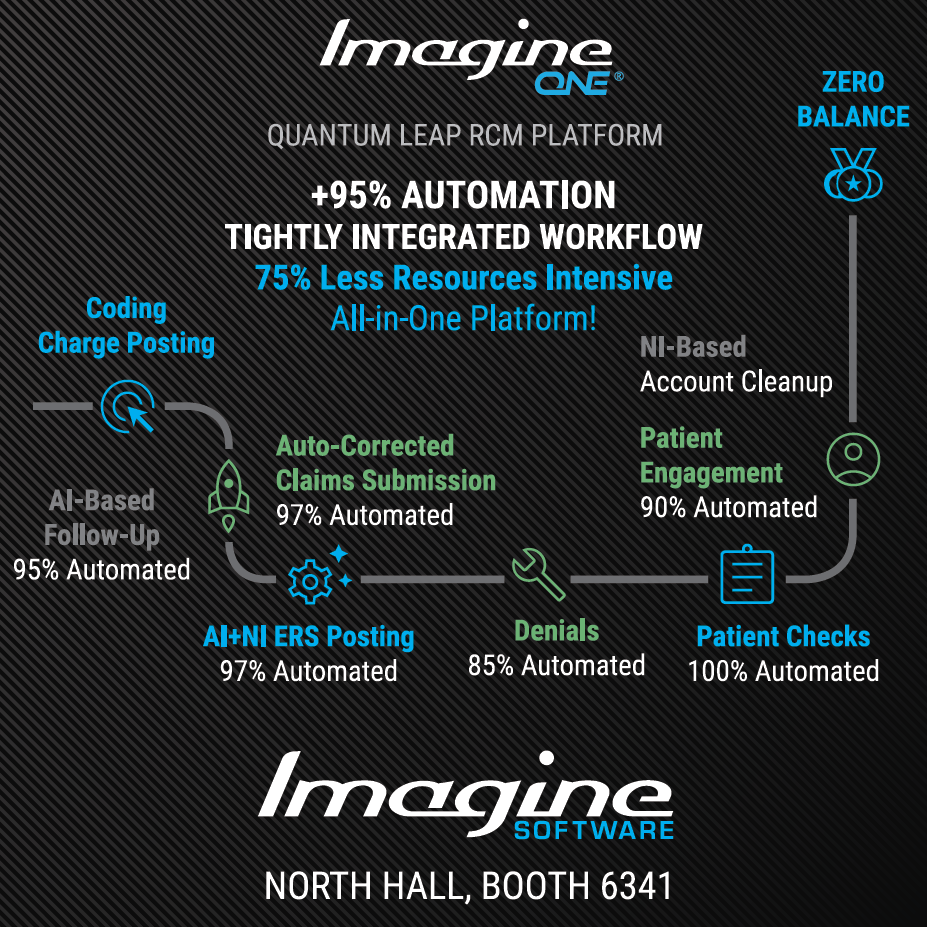Roughly $70 billion — that’s the amount the medical imaging industry is forecast to grow to by 2032. Even this year the diagnostic imaging market is expected to reach sales of $31.9 billion.
Why the rapid growth in the radiology industry? One reason is that, as the Centers for Disease Control and Prevention notes, the number of imaging studies being done increases by up to five percent annually. With this industry growth, however, comes more challenges, some of the biggest of which include staffing shortages and burnout.
A key factor in addressing these obstacles is automation. It not only makes it easier for healthcare providers to streamline multiple aspects of their business but also helps them improve care, lower costs, and reduce medical errors.
Advantages of Automation
Automation enables providers, including radiologists, to spend more time on direct patient care by minimizing or eliminating repetitive and labor-intensive manual, paper-based administrative and clinical processes. That means increased productivity and efficiency for both radiologists and their staff and colleagues.
Read More - Streamlining the Healthcare Revenue Cycle: Automation Strategies
According to the Council for Affordable Quality Healthcare (CAQH), the healthcare industry could save $9.8 billion annually by fully automating eligibility and benefit verification, prior authorization, claim submission, claim status inquiry, claim payment and remittance advice. And, approximately 40 percent of the tasks performed by healthcare occupations can be automated.
No wonder automation is increasingly employed in revenue cycle management (RCM). In addition to reducing turnaround times for insurance claims by as much as 75-85 percent, it results in more first-pass acceptance on claims. Also, technology solutions that employ automation improve provider documentation and increase accuracy, revenue, and reimbursement.
Read More - Transitioning from Manual to Automation: Healthcare Revenue Cycle Management
Long-Term Staffing Shortages
The United States Department of Labor is anticipating a 10 percent increase for staffing across MRI, nuclear medicine, ultrasound, radiologic and cardiovascular technologists and medical dosimetrists. The problem is that radiologists, radiographers and clinical oncologists are experiencing the largest shortages.
The radiology shortage is part of an overall healthcare staffing problem across the U.S. Every state is projected to have healthcare staff shortages by 2026, when the county will lack an estimated 3.2 million healthcare workers.
An analysis conducted by the Association of American Medical Colleges (AAMC) found that the shortage of radiologists and other specialists could exceed 35,000 by 2034. More than 85 percent of outpatient facilities and hospitals are facing staffing challenges as are roughly 80 percent of health systems.
The two primary drivers of the increasing demand for radiologists are advancements in medical imaging and an aging population requiring more healthcare services. The widespread staffing shortage is in part because of the strain of being a healthcare worker during the COVID-19 pandemic along with radiologists increasing rates of burnout.
Watch On Demand - What’s Keeping Today’s Practice Leaders Up at Night? | An RCM Panel Discussion
Staff shortages often lead to patients delaying care, including preventative screenings and procedures. Delayed care can lead to a potential to increase morbidity and mortality associated with both chronic and acute health conditions, amplify risk associated with preventable medical conditions and increase the likelihood of late-stage diagnoses.
RadNav, ImagineSoftware’s radiology workflow automation solution, is on a mission to reduce the number of referrals that go unnoticed and illnesses that go undiagnosed due to missed appointments – having a huge impact on both patients and healthcare providers.
"The reason this exists is because we saw a problem in health care, not just in radiology, but really across all of health care. One out of every two patients today are not receiving appropriate follow-up care. That's 50% of patients that are given a recommendation to do something by their doctor who are not doing it for one reason or another." - Adam Kirell, RadNav’s Senior Director of Business Development
Widespread Burnout
Physician burnout is prevalent across the healthcare industry, and radiology professionals are certainly not exempt from it. Just look at the troubling statistics from the Medscape Radiologist Lifestyle, Happiness & Burnout Report 2023: Contentment Amid Stress:
- More than 35 percent of radiologists said they felt burned out.
- Five percent of radiologists reported feeling depressed.
- Almost 20 percent of radiologists expressed that they felt burned out and depressed.
- Roughly 45 percent of radiologists report that burnout has had a strong or severe impact on their life.
With such an increase in burnout among radiology professionals, radiologists list four issues as contributing most to their burnout: too many hours at work, lack of respect from administration/employer or colleagues/staff, lack of control/autonomy, and too many bureaucratic tests (i.e., charting, paperwork).
Burnout among radiologists doesn’t only affect healthcare professionals; it impacts patients’ healthcare experiences due to increased waiting times, anxiety levels, and the risk of false positive and negative screening outcomes.
Read More - Staffing Shortages & Losing Tribal Knowledge: Where Medical Billing Automation Can Help
Imagine What Our Solutions Can Do for Your Radiology Practice or Imaging Center
There’s no technology that can eliminate the challenges facing radiologists, but some solutions make their job easier and lessen their administrative burden. At ImagineSoftware, our radiology billing software offers customizable worklists, medical record scanning, a translation tool to integrate fast and accurate charge capture, and more.
Learn more about ImagineOne™, ImagineSoftware’s seamless billing platform that improves cash flow, simplifies processes, and monitors productivity in real time. Request a demo today to learn more!

Attending RSNA 2023? Stop by Booth #6341 North Hall to see the ImagineOne™ difference in person!